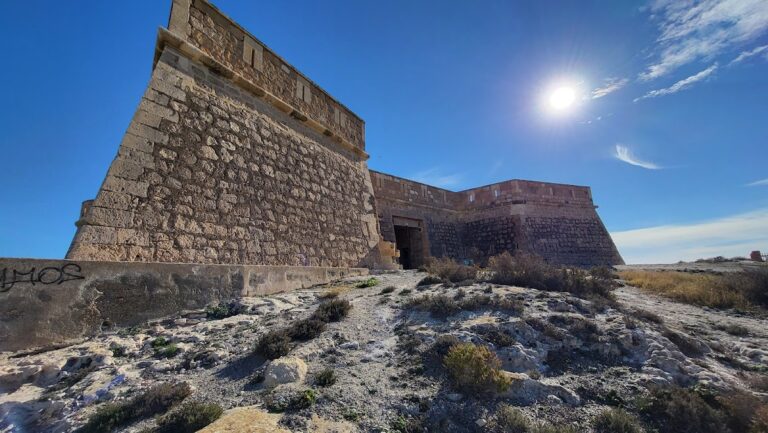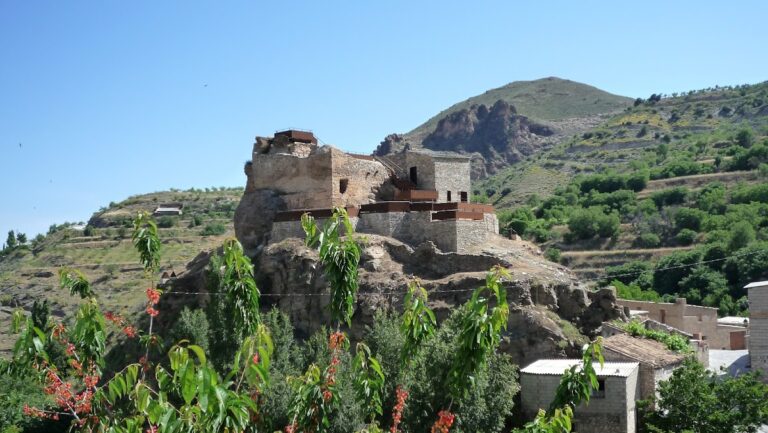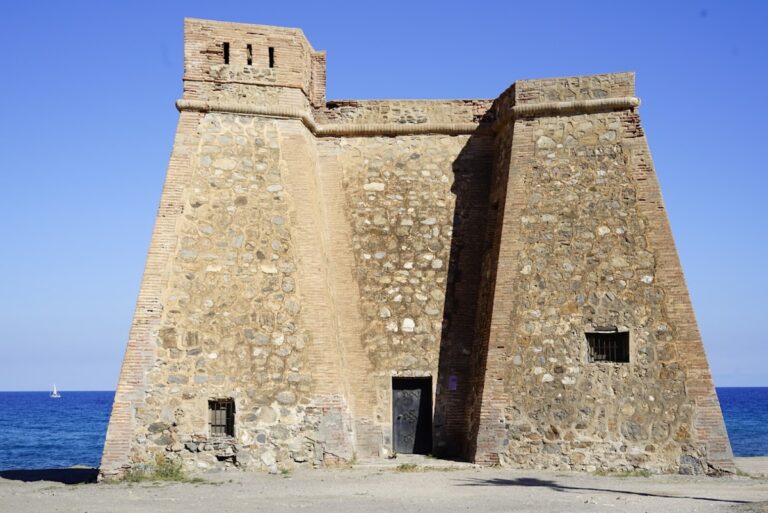Alcazaba of Almería: A Historic Fortress in Southern Spain
Visitor Information
Google Rating: 4.6
Popularity: High
Google Maps: View on Google Maps
Country: Spain
Civilization: Medieval Islamic
Remains: Military
History
The Alcazaba of Almería is located on Cerro de San Cristóbal, a hill overlooking the city and the sea in southern Spain. It was founded in 955 by Caliph Abd ar-Rahman III, who elevated Almería to the status of medina, meaning “city,” and began constructing the defensive citadel on the city’s upper sector. This initial fortress was built over an earlier structure and served as a military stronghold and local government seat, controlling both the city and nearby maritime approaches.
In the early 11th century, the complex expanded under Caliph Al-Mansur and later under Khayran as-Saqlabi, the first king of the independent Taifa of Almería (1012–1028). During this period, the Alcazaba protected Pechina, then the largest city in the region. The fortified area included walls, towers, residential quarters, a mosque, and military facilities, reflecting its dual role as a defensive and administrative center.
Following the Christian reconquest of Almería in 1489, the Catholic Monarchs Isabella I of Castile and Ferdinand II of Aragon commissioned the construction of a new castle within the Alcazaba. Built between 1490 and 1534 on the highest part of the complex, this castle was designed to withstand gunpowder artillery, marking a significant adaptation to evolving military technology. The Christian rulers also added features such as a moat and drawbridge to enhance defense.
The Alcazaba suffered damage from earthquakes, notably the 1522 event, and periods of neglect led to partial ruin. Restoration efforts began in the 20th century, including archaeological excavations starting in the 1950s. These efforts aimed to conserve the sandstone structures and recover historical elements. The site was declared a historic-artistic monument in 1931 and later recognized as a Bien de Interés Cultural in 1985, ensuring legal protection for its castle, walls, and towers dating from the 15th and 16th centuries.
Throughout its history, the Alcazaba has maintained symbolic and practical importance. A local tradition holds that the Torre de los Espejos (Tower of Mirrors) used a system of mirrors to signal incoming ships. The complex also housed a mosque, later converted into the hermitage of San Juan after the Christian conquest. The bell known as the Campana de la Vela, built by King Charles III, was historically used to signal events such as ship arrivals or fires.
Remains
The Alcazaba of Almería is a large fortified complex with a perimeter of about 1,430 meters. It is built primarily from local sandstone quarried nearby, known as Canteras Califales. The complex consists of three main enclosures arranged on Cerro de San Cristóbal, offering commanding views of the city and bay.
The first enclosure served as a military camp and refuge during sieges. It is divided into two neighborhoods and includes a small cemetery. Large cisterns, called aljibes, were used to store water, with one partially exposed today. A well in this area raised water from 70 meters below. Access to this enclosure is through the Torre de los Espejos, which contains the Puerta de la Justicia (Gate of Justice). Tradition attributes a signaling system using mirrors to this tower.
The second enclosure functioned as the residential area for governors, soldiers, and servants. It contained a mosque, later converted into the hermitage of San Juan, baths modeled after Roman designs known as Baños de la Tropa, cisterns, and shops. Some original houses have been reconstructed based on archaeological ruins and now serve as exhibition spaces. A northern wall from the 11th-century Almotacín palace remains, featuring two openings overlooking the Barranco de la Hoya ravine.
The third enclosure, known as the Castle, is the newest part of the complex, built between 1490 and 1534 under Christian rule. It occupies the highest and westernmost area and is protected by three semicircular towers: the Torre del Homenaje (Keep), Torre de la Noria del Viento (Wind Tower), and Torre de la Pólvora (Powder Tower). A moat and drawbridge provide additional defense. The Torre del Homenaje is the largest tower with a square plan and was designed as a residence. Its main door frame was prepared to hold the coat of arms of Charles I, though this was never installed.
The castle walls are constructed from sandstone blocks marked with over 25 different geometric mason’s marks. These marks identify individual stonecutters and some match those found in the city’s cathedral, suggesting shared craftsmen. The Torre de la Pólvora stored gunpowder and was fitted with the city’s first lightning rod around 1845, consisting of three platinum points and a tall needle, funded by local wealthy families.
Remnants of the original city walls, known as the Murallas de Jayrán, are found on Cerro de San Cristóbal. Built by King Jayrán in the early 11th century, these walls include seven towers—three square towers of Arab origin and four circular towers added by Christians in 1147. The walls are approximately 3 meters thick and 5 meters high. The Puerta de la Almudaina gate survives as part of this structure.
The site also features gardens and ornamental elements added during 20th-century restorations, inspired by the Alhambra. A marble statue of the Sacred Heart of Jesus stands atop Cerro de San Cristóbal. Originally erected in 1928, it was destroyed during the Spanish Civil War, rebuilt in 1944, and restored in 2000.
The Campana de la Vela bell, located on the Muro de la Vela, was historically used to signal important events such as ship arrivals, danger, or fires. Archaeological excavations have been conducted intermittently since the 1950s, with recent work focusing on Andalusi houses and palace walls. These efforts have helped preserve and reveal the complex’s layered history.










